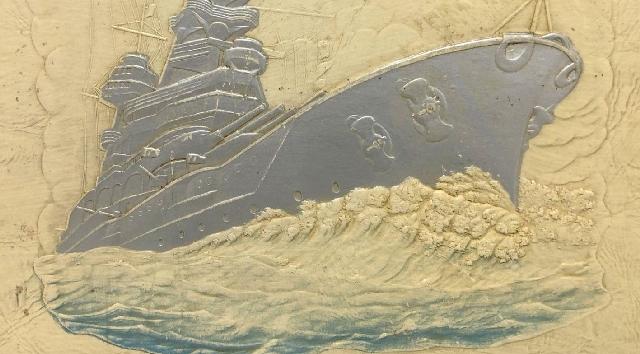-
Posts
1,282 -
Joined
Content Type
Profiles
Forums
Events
Blogs
Gallery
Everything posted by SUP
-
I read somewhere in the last couple of days about adding something or the other that keeps bone glue liquid. If I find it again, I will put it up here. I might have found it on a thread here but I'm not sure. Oh you've recently started getting immigrants. The world is really shrinking, is it not? I just looked up the information on bone glue. The recipe says to add isopropyl alcohol to keep it liquid. No idea whether it works. Besides in the video, they kept it uncovered and the alcohol will evaporate and the glue will thicken. More research needed.
-
Wow! I did not know that! PVA glue cups. And what a coincidence seeing someone wearing the same footwear! Many men wear them in South Asian countries and bring them along when they migrate. They are very comfortable. The leather usually needs a bit of oiling to soften it but after that, they are wonderful. I grew up wearing Kolhapuri chappals, also handmade leather footwear. I refused to wear anything else. Nothing was as comfortable. I plan to try to make a pair soon. I have preserved my last pair carefully for precisely that reason - to get my size and the pattern. It will probably take me weeks.😄 About the glue, I wonder whether it is bone glue.
-
Oh! Then it's understandable. Vey sad.
-
That's too bad. I wonder why.
-
The book has proved to be popular. He should be able to find a publisher. So many people looking for it.
-
Oh. So there is no way it can get printed again? I wonder.
-
I wonder why it went out of print. It is shown in Amazon as out of stock. It seems so popular and everyone wants it.
-
I just saw another similar video with an intriguing little cup to hold some colorless liquid - it appears to be made entirely of... glue?
-
I know. The glue in an open pot applied with fingers, the granite stone which is used to work on as well as to sharpen the single knife and a block of wood. I think of all the tools that I have and still not getting that result. Makes me feel so humble.
-
Yes. Simple and beautiful. So much more difficult to achieve though! It is so nice to find ready made patterns. I had heard of music rolls but had no idea what they were. Thank you for enlightening me. 😃
-
Found this the other day. Awed that there is no guide-line for sewing or anything else.
-
Those are lovely and just what I was looking for. Thank you @Sheilajeanne 🙂 I have drawn a couple of flower designs and was wondering how to incorporate them into leatherwork. These designs provide the guidance that I need.
-
I'll do that! Thank you for the tip.
-
The tooling on the veg tanned leather and the distressed look of the chrome tanned are very different and give good contrast, in my opinion. The lighter parts of the distressed colors are the color of the veg tanned leather and the darker tooled areas on the leaves reflect the darker color of the chrome tanned leather, giving continuity between the two leathers.
-
I like the contrast between the tooled and chrome tanned leathers - the colors as well as the textures. Very nice.
-
Thank you for your reply. From close, it did not appear stamped. At least the sea did not. The ship, I wondered about that. But the sea is more interesting to me. How is surf like that tooled? I wonder whether one of those classes that Elk Track studios provides teaches something like that. I must check.
-
This is on an old album from WWII.
-
This is the cover of an old military album I saw in a store. That sea looks so realistic. Those waves, that foamy look. How was that tooled? It felt 3-D.
-
Each time I set up a new password or change one, I check what I was doing just prior, and use that activity in a phrase - in a different language, spelt in English - as my password e.g. 'tomato sandwich breakfast' in Hindi. I also add numbers and special characters and of course, different cases. Unbreakable! All stored safely, accessible only to me.
-
I feel for you! Maybe you could direct that anger into some more of your quirky designs that are always so beautiful. Hammering punches into a few thick pieces of leather is always so therapeutic! I know that your belt bag is one that I always want to make but never seem to have the appropriate belts for it. Still collecting though.
-
@Frodo, sorry about your truck. How did that happen? Those books all have such charming and cheerful designs. There are books with undersea and mountain sceneries as well, which are beautiful. The mandalas are very complicated though, the first one you have shown here @Frodo.
-
In the thread on preventing mold, a very recent thread, you will find, @Northmount and @Johanna have explained how to use vinegar or Listerine to clean and preserve leather. They are much more knowledgeable and experienced than I am.
-
Do you use it diluted? What about the smell?
-
I usually use dilute vinegar first and allow it to dry. That gets rid of mold and mildew. Then the cleanser and conditioner to replace the oils and normalize pH. Clorox is not meant for leather and might well damage it.
-
So increasingly finer sandpaper to smoothen and then burnish with Tokonole. Ah! Should have used my common sense about it. I've been smoothening with 400 grit and then burnishing. So it was evidently not smooth enough before burnishing, to give that shine. If I remember correctly, this was mentioned elsewhere earlier but I had forgotten. I've not used gum Trag but many who have used it say that they prefer Tokonole. I like it. Incidentally, I'm new at leatherwork too - just about 2 years. So I'm learning all the time as well.





